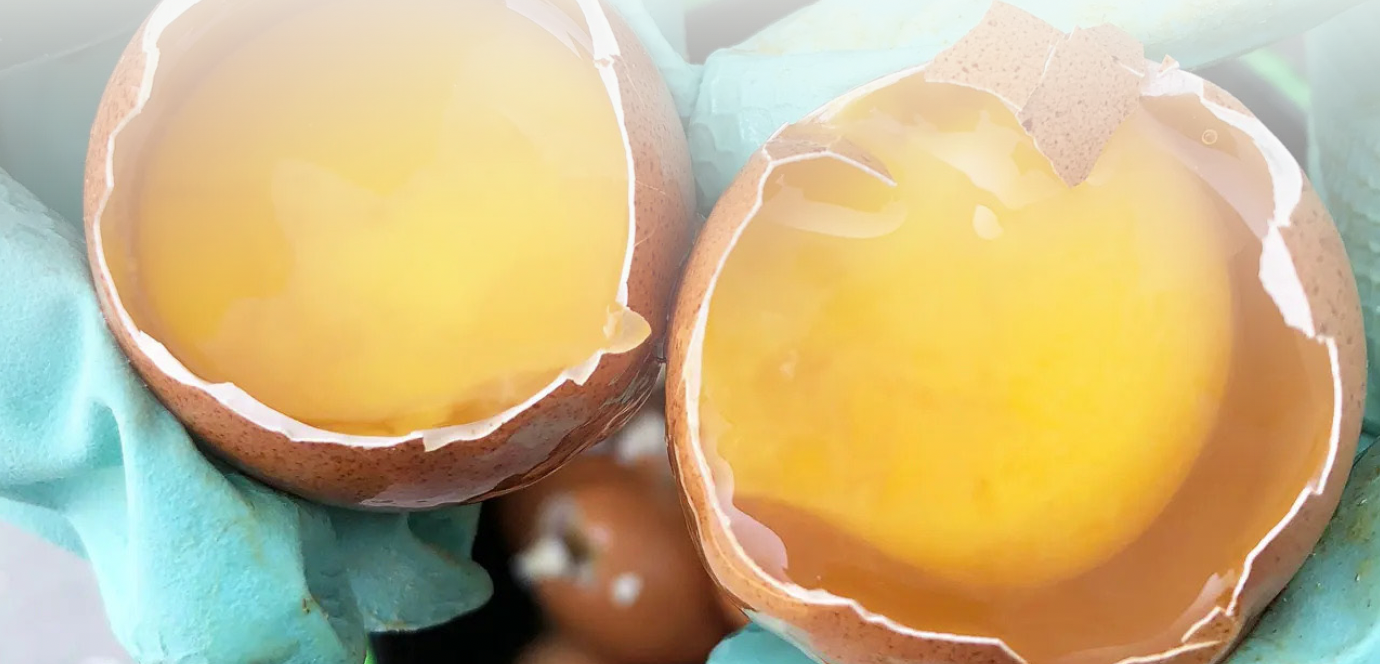
Top-quality chicks are the cornerstone of the poultry industry. The quality of day-old chicks significantly impacts growth performance and, ultimately, the final product delivered to the end-customer.
For any hatchery, the main goal is to maximize the percentage of first-quality chicks. Achieving this goal requires a thorough approach to assessing chick quality.
THE CRITICAL ROLE OF CHICK QUALITY ASSESSMENT
Evaluating chick quality provides important information on the entire production process. Chick quality is influenced by pre-incubation, incubation and post-hatch factors.
Factors such as breeder flock health, nutrition, storage environment and transport all affect chick quality. Incubation conditions – temperature, CO2 concentration, humidity level and the frequency and angle of turning during incubation – play vital roles in both embryo development and chick quality. Post-hatch factors like chick handling, processing, storage environment and transport also impact growth performance later in life.
That being said, it is self-evident that commercial hatcheries cannot inspect each day-old chick in detail, as it would be done scientifically.
A PRACTICAL APPROACH TO QUALITY CONTROL: FROM PARAMETERS TO SAMPLING
According to Petersime, effective chick quality assessment in the hatchery involves combining different key parameters, which range from visual traits to hidden characteristics such as yolk sac residue. It is crucial to take the unique characteristics of the parameters into account and connect their results to ensure a thorough evaluation of overall chick quality.

Beyond selecting parameters, focusing on when and how to sample also plays a critical role. The optimal time for quality control is between 16 to 20 hours after the hatch peak, typically in the take-off room.
To ensure a representative sample, a minimum of 3 hatcher baskets per flock is used for group chick quality assessments – preferably the same baskets already labelled and used for egg breakouts, taken from the top, middle and bottom position. For a more in-depth analysis of individual chicks within the group, sampling 15 chicks from each of the 3 hatcher baskets is recommended, resulting in a total sample of 45 chicks per flock.
Based on Petersime’s expertise, the following parameters are regarded as essential for assessing chick quality. While some parameters are more subjective than others, trained observers can assess specific characteristics or traits to provide a reliable estimate of the quality of day-old chicks.
1| FIRST IMPRESSION AND VITALITY
Observing the general look and vitality of all chicks in the 3 sampled baskets is a fundamental and recommended practice. Day-old chicks of good quality are in general clean, dry, lively, alert and free from deformities. Their feather colour is uniform, and their eyes are bright and round. For a deeper insight into vitality, sampling 15 chicks per sampled basket is considered a practical approach. This can be evaluated by gently placing a chick on its back to check if it turns itself back within three seconds (watch movie).
Checking the navel and belly is a relatively easy and effective method for evaluating chick quality. It can give several hints on incubation conditions. During the final stages of incubation, many important processes occur, such as blood withdrawal from the chorioallantoic membrane and yolk sac uptake. The navel is the physical point where this vascular and yolk sac retraction occurs. Therefore, examining the navel of 15 chicks per sampled basket is a powerful tool for identifying the root causes of problems and understanding what occurred during the incubation period.
A good-quality navel is closed, dry and free of eggshell and membrane residues. A poor-quality navel is a potential entry point for bacteria into the most sensitive part of the body cavity, which drastically increases susceptibility to disease and the risk of post-hatch mortality. The belly must be soft, smooth and non-bloated.
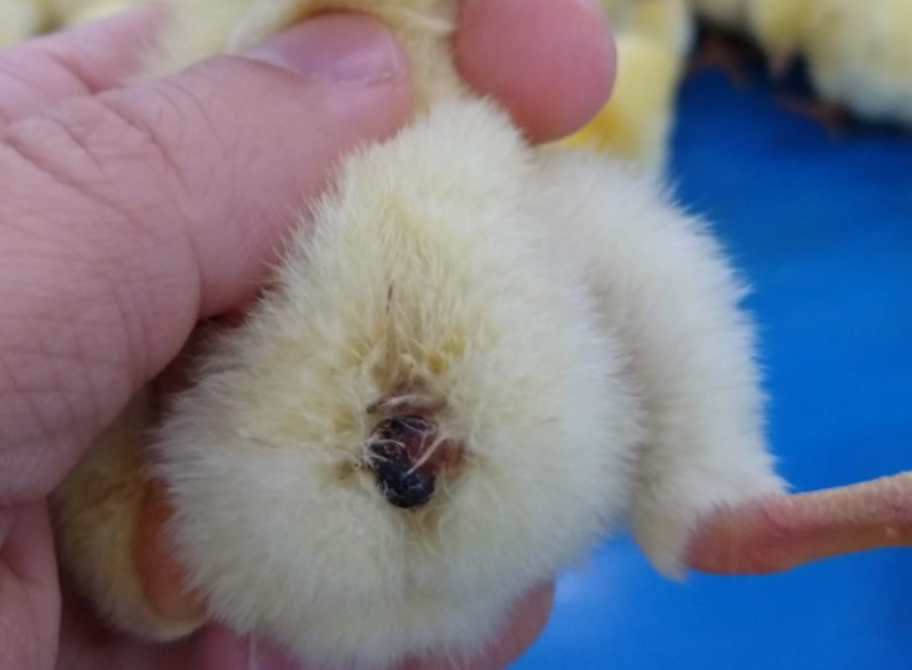
The condition of the navel reveals much about chick quality. A badly healed navel has a protruding, large dark button or a long string of non-absorbed membrane.
3| FEATHERING
A newly born chick of good quality looks fluffy and has clean and dry feathers, free from any materials such as yolk and meconium.

Chicks displaying flat feathers on their head and neck suggest temperature fluctuations during the final days of incubation.
4| BEAK
The beak is vital for physical well-being, as it is used for breathing, drinking and picking up feed. It needs to be healthy and fully formed. The nostrils should be clean and open so the chick can breathe normally.
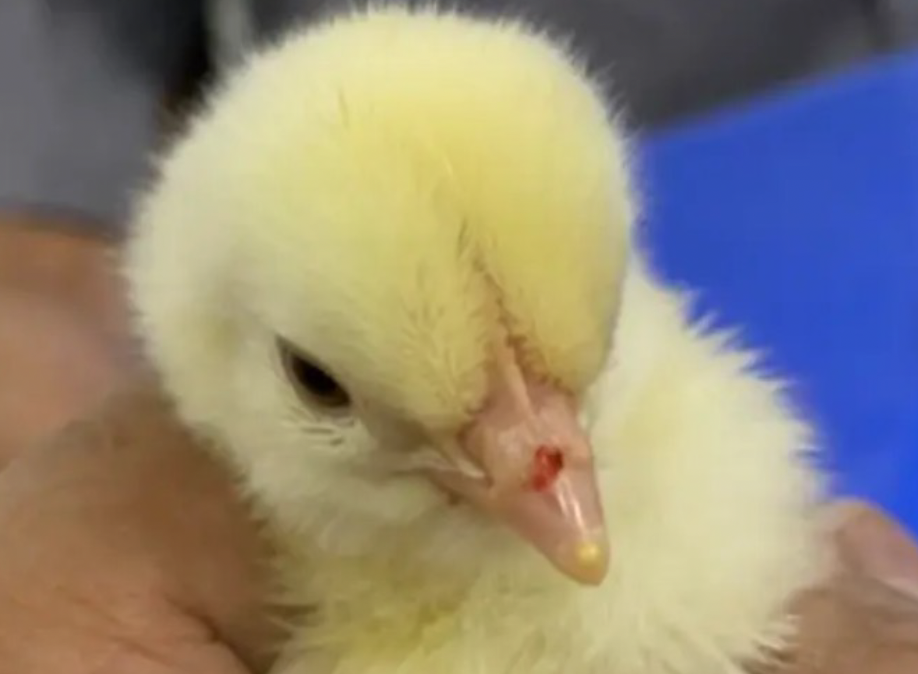
A red spot on the beak is a signal that something was wrong with the incubation conditions.
5| LEGS (TOES, JOINTS AND KNEES)
Good-quality chicks have well-developed, hydrated legs that are free from injuries. Good leg health is important for post-hatch performance, as it allows chicks to develop their muscles optimally, move freely, look for feed and behave naturally.
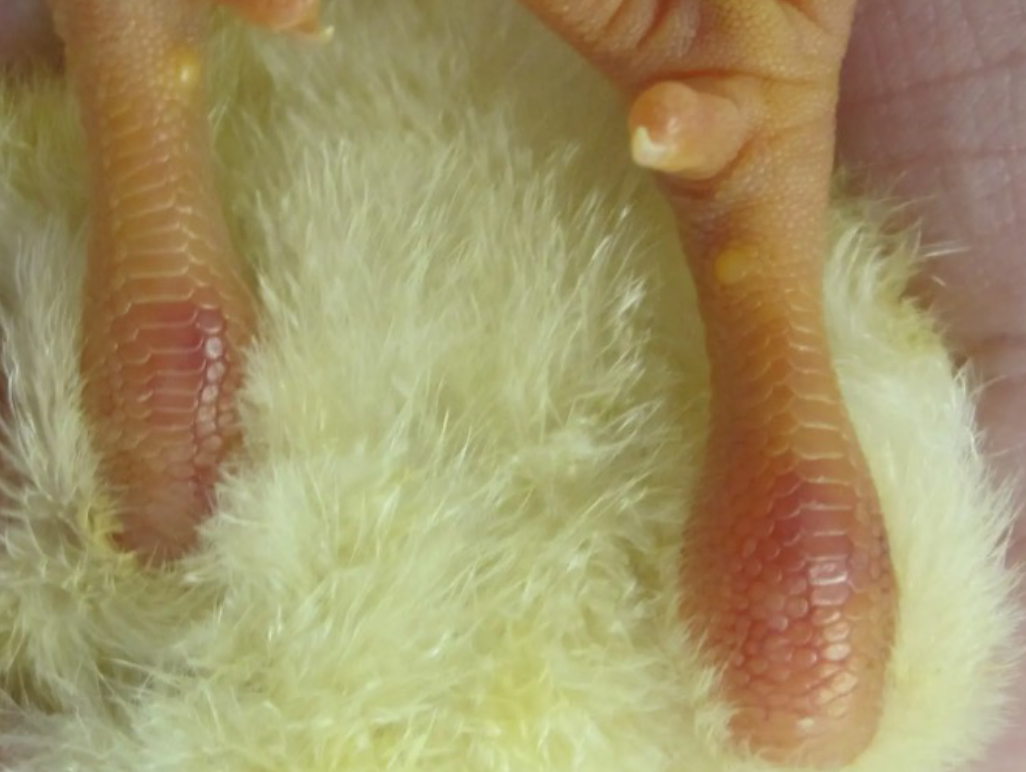
Red hocks can have various causes but typically indicate issues with incubation conditions or hatchery procedures.
6| CHICK YIELD – YOLK SAC RESIDUE
Chick yield is calculated by dividing the average chick weight by the average fresh egg weight and multiplying the result by 100. When the incubation process is carried out properly, the chick yield at take-off typically represents around 67-68% of the initial fresh egg weight.
Although this is an objective measurement, the value is relative. This is because the total body weight is the sum of the chick weight and the remaining yolk residue weight. If a lot of yolk is left over, then less development has occurred. Hence, chick yield as a single indicator does not give a good indication of chick quality. It should be supplemented with a subsample of 15 chicks per sampled basket to have an accurate assessment on how effectively the yolk sac was utilized.
The yolk residue weight must be subtracted from the total body weight. An acceptable yolk sac to body weight ratio is 10% or less, indicating optimal environmental conditions during incubation and effective yolk utilization by the embryo. This method provides a more precise indicator of chick quality, but it is labour-intensive and involves sacrificing chicks.
CONCLUSION
Achieving high hatchability is crucial but ensuring the quality of the day-old chicks supplied to farms is just as important. Farms are looking for chicks with the best growth potential, resulting in the best outcome at the end of the rearing period. By implementing a thorough approach to chick quality assessment, hatcheries can enhance their percentage of premium-quality chicks, ultimately benefiting the entire poultry production chain.
In summary, here is essential guidance on chick quality control in commercial hatcheries:
Don’t forget that all observations reflect what happened to the eggs and chicks before incubation, during incubation and immediately after hatch.
Petersime is happy to help you learn more about chick quality control and how to apply a scoring method in the hatchery. The topic is covered in the training programmes we offer. Please don’t hesitate to contact us for more information.
Subscribe now to the poultry technical magazine
AUTHORS
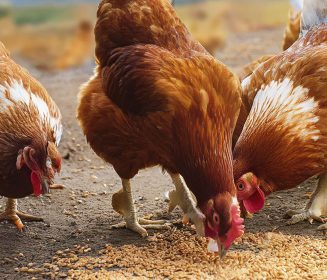
Layer Longevity Starts at Rearing
H&N Technical Team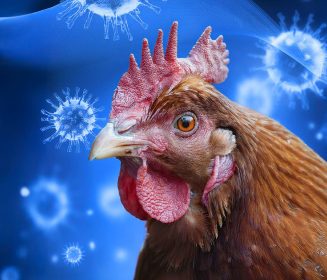
The Strategy for a Proper Infectious Bronchitis Control
Ceva Technical Team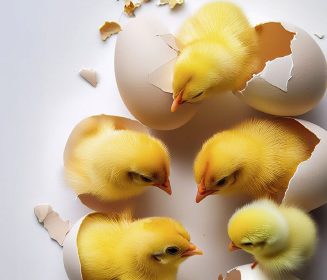
Elevate Hatchery Performance with Petersime’s New Data-Driven Incubation Support Service
Petersime Technical Team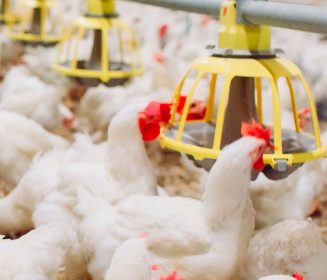
Maize and Soybean Meal Demand and Supply Situation in Indian Poultry Industry
Ricky Thaper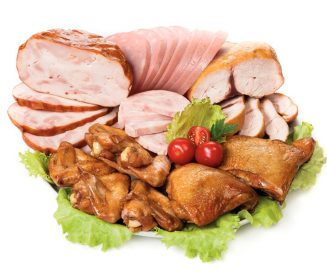
Production of Formed Injected Smoked Chicken Ham
Leonardo Ortiz Escoto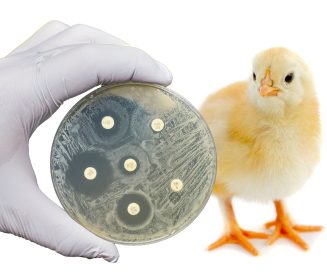
Antimicrobial Resistance in the Poultry Food Chain and Novel Strategies of Bacterial Control
Edgar O. Oviedo-Rondón
GREG TYLER INTERVIEW
Greg Tyler
Insights from the Inaugural US-RSPE Framework Report
Elena Myhre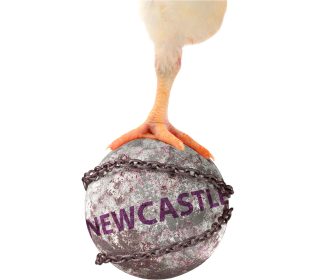
Newcastle Disease: Knowing the Virus Better to Make the Best Control Decisions. Part II
Eliana Icochea D’Arrigo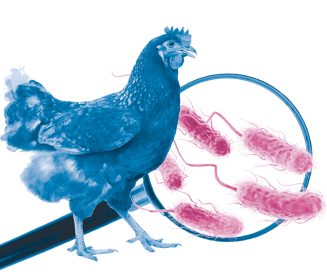
Avian Pathogenic E. coli (APEC): Serotypes and Virulence
Cecilia Rosario Cortés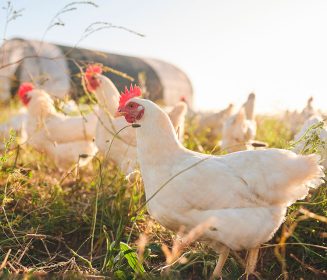
The Importance of Staff Training on Animal Welfare Issues in Poultry Industry
M. Verónica Jiménez Grez
Rodent Control is a Key Factor in Poultry Biosecurity and Sustainability
Edgar O. Oviedo-Rondón